Subtotal: £22.26
Pair of Yellow Snakeskin Miniature Guppy (Livebearer), Beautiful Tropical Fish That Promotes a Thriving Environment – Perfect for Guppy Breeding and Care
£17.49 Original price was: £17.49.£14.52Current price is: £14.52.
Welcome these beautiful Yellow Snakeskin Miniature Guppies into your aquarium! Known for their vibrant color and peaceful nature, these Endler guppies are perfect community members. Provide a loving home for one male and one female, and watch them flourish in your tropical setup.
1001 in stock
Species Introduction
The Pair of Yellow Snakeskin Miniature Guppy, scientifically known as Poecilia reticulata, belongs to the family Poeciliidae. These vibrant freshwater fish are native to the tropical regions of South America, particularly in areas such as Venezuela and the Guyanas. They thrive in warm, shallow waters with abundant vegetation, which provides them with both food sources and shelter. The unique coloration and patterns of the yellow snakeskin guppy make them a popular choice among aquarists looking to enhance the aesthetic appeal of their community aquariums. These livebearers are not only beautiful but also exhibit fascinating behaviors, making them a delightful addition to any aquatic environment.
Care Requirements Dashboard
| Optimal Living Conditions | |
|---|---|
| Water Temperature | 24-27°C (75-81°F) |
| pH Level | 6.5-7.5 |
| Water Hardness | 4-12 dKH |
| Minimum Tank Size | 80L (20 gal) |
| Salinity | Freshwater |
| Care Level | Beginner Friendly |
Natural Behavior & Temperament
Yellow snakeskin guppies are known for their active and playful nature. They exhibit a range of swimming patterns, often darting around the tank in search of food or exploring their environment. These fish are generally peaceful and thrive in community tanks, making them excellent companions for other small, non-aggressive species. Their social behavior is characterized by schooling, and they often engage in playful interactions with one another. Observing their lively antics can be a source of joy for aquarists, as these fish display a high level of curiosity and intelligence.
Tank Setup Guide
Creating an ideal environment for your yellow snakeskin guppies is crucial for their health and well-being. A minimum tank size of 10 gallons is recommended to provide ample swimming space. The substrate should be soft and smooth, as sharp edges can harm their delicate fins. Incorporating live plants such as Java moss or Anubias not only enhances the aesthetic appeal but also provides hiding spots and breeding grounds. Decorations like driftwood and rocks can be added to create a natural habitat. Ensure that the tank is well-aerated and has a gentle filtration system to maintain water quality without creating strong currents that could stress the fish.
Water Quality Management
Maintaining optimal water quality is essential for the health of your yellow snakeskin guppies. The ideal pH level should range from 6.5 to 8.0, with a temperature between 22-28°C (72-82°F). Regular water changes of 20-30% every week are recommended to keep nitrate levels low and ensure a healthy environment. Testing the water parameters regularly using a reliable test kit will help you monitor the conditions and make necessary adjustments. Additionally, using a quality water conditioner will help remove harmful chemicals and chlorine from tap water, ensuring a safe habitat for your aquatic companions.
Feeding & Nutrition
Feeding Schedule: 2-3 Times Daily
Yellow snakeskin guppies are omnivorous and thrive on a varied diet. High-quality flake food, micro-pellets, and frozen or live foods such as brine shrimp and daphnia are excellent choices. It is important to avoid overfeeding, as this can lead to poor water quality and health issues. A feeding schedule of 2-3 times daily, offering only what they can consume in a few minutes, will help maintain their health and vitality. Supplementing their diet with spirulina or vegetable-based foods can enhance their coloration and overall well-being.
Compatibility Guide
When considering tank mates for your yellow snakeskin guppies, it is essential to choose species that share similar water requirements and temperaments. They are generally compatible with other small, peaceful fish such as neon tetras, Corydoras catfish, and other varieties of guppies. However, larger or aggressive fish should be avoided, as they may stress or harm the guppies. It is also important to consider the size of the tank and the number of fish to prevent overcrowding, which can lead to stress and health issues. Monitoring interactions among tank mates will help ensure a harmonious community.
Health & Wellness
Maintaining the health of your yellow snakeskin guppies involves regular observation and proactive care. Common health issues include fin rot, ich, and swim bladder disease. Signs of illness may include lethargy, loss of appetite, or abnormal swimming behavior. To prevent these issues, ensure optimal water quality, provide a balanced diet, and avoid overcrowding in the tank. Quarantining new fish before introducing them to the main tank can help prevent the spread of diseases. Regular water testing and maintaining a clean environment are key components of ensuring the well-being of your aquatic friends.
Breeding Information
Breeding Level: Easy
Breeding yellow snakeskin guppies is a rewarding experience, as they are livebearers and give birth to free-swimming fry. To encourage breeding, provide plenty of hiding spots in the tank, such as dense plants and decorations. The female guppy will carry the fry for approximately 4-6 weeks before giving birth. After birth, it is crucial to separate the fry from adult fish to prevent them from being eaten. A separate breeding tank with appropriate water conditions can help ensure the fry’s survival. Feeding the fry with finely crushed flakes or specialized fry food will support their growth and development.
Acclimation Process
Introducing your yellow snakeskin guppies to their new home requires careful acclimation to minimize stress. Begin by floating the sealed bag containing the fish in the tank for about 15-20 minutes to equalize the temperature. After that, gradually mix small amounts of tank water into the bag over the next hour. This process helps the fish adjust to the new water parameters. Once acclimated, gently release the guppies into the tank using a net to avoid adding bag water, which may contain harmful substances. Monitoring the fish closely during the first few days will help ensure a smooth transition.
Long-term Care
Yellow snakeskin guppies have a lifespan of 2-3 years with proper care. It is essential to provide a stable environment, including consistent water parameters and a balanced diet, to promote longevity. Regular maintenance, such as water changes and tank cleaning, will help prevent health issues. Observing your fish daily will allow you to notice any changes in behavior or health, enabling you to address potential problems promptly. As they grow, you may need to adjust their diet and tank setup to accommodate their changing needs.
Natural Habitat Recreation
To create a natural habitat for your yellow snakeskin guppies, consider replicating their native environment. This includes using a soft substrate, such as sand or fine gravel, and incorporating a variety of live plants to mimic the lush vegetation found in their natural habitat. Floating plants can provide shade and cover, while rooted plants offer hiding spots for fry. Adding driftwood and rocks can create territories and enhance the overall aesthetic of the tank. Maintaining a gentle water flow will help simulate their natural environment, making them feel more secure and comfortable.
Seasonal Care Adjustments
As seasons change, it is important to adjust the care of your yellow snakeskin guppies accordingly. In warmer months, ensure that the water temperature remains stable and avoid overheating by using fans or air conditioning if necessary. During colder months, consider using a heater to maintain the optimal temperature range. Additionally, monitor the lighting duration, as natural light cycles can influence fish behavior and breeding. Adjusting feeding schedules and quantities based on seasonal activity levels will also help maintain their health and vitality.
Expert Tips
Professional Advice
To ensure the best care for your yellow snakeskin guppies, consider joining a local aquarium club or online community. Engaging with experienced aquarists can provide valuable insights and support. Additionally, keeping a journal of your tank parameters, feeding schedules, and fish behavior can help you identify trends and make informed adjustments. Regularly researching advancements in fish care and husbandry techniques will also enhance your knowledge and improve the overall health of your aquatic companions.
Troubleshooting
If you encounter issues with your yellow snakeskin guppies, such as unexplained deaths or signs of illness, it is crucial to act quickly. Start by testing the water parameters to identify any discrepancies. If water quality is poor, perform a partial water change and address any underlying issues. Observe the fish closely for signs of stress or disease, and consider consulting a veterinarian specializing in aquatic animals if necessary. Maintaining a clean environment and following proper care protocols will help prevent many common problems.
Scientific Background
The yellow snakeskin guppy is a fascinating species with a rich scientific background. As a member of the family Poeciliidae, they are closely related to other popular livebearers, including mollies and swordtails. Their adaptability to various freshwater environments has made them a staple in the aquarium trade. Ongoing research into their genetic diversity and breeding patterns continues to reveal insights into their care and conservation. Understanding their biology and ecology enhances our appreciation for these vibrant fish and informs best practices for their care.
Advanced Care Techniques
For aquarists looking to take their care of yellow snakeskin guppies to the next level, consider implementing advanced techniques such as selective breeding to enhance desirable traits. Maintaining a breeding program can help you produce vibrant colors and patterns while promoting genetic diversity. Additionally, utilizing a planted tank setup with CO2 injection can improve plant growth and overall tank health. Regularly experimenting with different feeding regimes, including live foods, can also promote optimal growth and coloration in your guppies. Staying informed about the latest research and techniques in aquaculture will further enhance your skills as a fish keeper.
Frequently Asked Questions
Q: What tank size is required for the Yellow Snakeskin Miniature Guppy?
For a pair of Yellow Snakeskin Miniature Guppies, a tank size of at least 20 litres is recommended. This provides ample swimming space and allows for stable water parameters, which is crucial for their health. Guppies are active swimmers and thrive in a well-planted aquarium where they can exhibit their natural behaviours. If you wish to keep a larger group or include other tank mates, consider a larger tank to prevent overcrowding. Proper filtration and regular water changes will help maintain a healthy environment, ensuring your aquatic companions flourish.
✓ Expert Tip
Consider adding live plants to your aquarium, as they provide hiding spots and help maintain water quality.
Q: What water parameters do Yellow Snakeskin Miniature Guppies require?
Yellow Snakeskin Miniature Guppies thrive in water with a temperature range of 24-28°C, a pH level between 7.0 and 8.0, and a hardness of 10-20 dGH. Regular monitoring of these parameters is essential, as fluctuations can stress the fish and lead to health issues. It is advisable to use a reliable aquarium heater and a quality water testing kit to ensure optimal conditions. Regular water changes of 10-15% weekly will help maintain water quality and remove harmful toxins.
✓ Expert Tip
Consider using a sponge filter for gentle water flow, which is ideal for the delicate fins of guppies.
Q: How often should I feed Yellow Snakeskin Miniature Guppies?
Feeding Yellow Snakeskin Miniature Guppies should be done 2-3 times a day, providing only as much food as they can consume within 2-3 minutes. This helps prevent overfeeding and maintains water quality. A varied diet including high-quality flakes, frozen or live foods like brine shrimp and daphnia will ensure they receive essential nutrients. During breeding periods, consider supplementing their diet with high-protein foods to aid in fry health and development.
✓ Expert Tip
Avoid feeding them too much; it’s better to underfeed slightly than to overfeed.
Q: What are the best tank mates for Yellow Snakeskin Miniature Guppies?
When selecting tank mates for your Yellow Snakeskin Miniature Guppies, consider peaceful species that share similar water parameters. Ideal companions include Neon Tetras, Corydoras Catfish, and other small livebearers. Avoid aggressive or larger fish that may see guppies as food or stress them. Ensure that all tank mates are compatible in temperament and size to create a harmonious community. A well-planned aquarium will enhance the overall well-being of your aquatic companions.
✓ Expert Tip
Introduce new tank mates gradually to reduce stress and allow for proper acclimatisation.
Q: How do I properly acclimatise Yellow Snakeskin Miniature Guppies to my aquarium?
Acclimatising your Yellow Snakeskin Miniature Guppies is crucial to avoid shock. Begin by floating the sealed bag in your aquarium for about 15-20 minutes to equalise the temperature. Then, gradually add small amounts of aquarium water to the bag over a period of 30 minutes. This helps the fish adjust to the new water parameters. After this, gently net the guppies into the tank, discarding the bag water to prevent introducing unwanted contaminants.
✓ Expert Tip
Avoid pouring the bag water into your aquarium, as it may contain harmful substances.
Q: What are the signs of healthy Yellow Snakeskin Miniature Guppies?
Healthy Yellow Snakeskin Miniature Guppies exhibit vibrant colours, clear eyes, and active behaviour. They should swim freely and exhibit natural social interactions with their tank mates. Watch for signs of stress or illness, such as loss of appetite, lethargy, or fading colour. Regular observation will help you spot any changes in behaviour or health, allowing for prompt action if needed. Maintaining optimal water conditions will significantly contribute to their overall health.
✓ Expert Tip
Keep an eye out for any signs of illness, and consult your local aquatic vet if you notice anything unusual.
Q: How do I successfully breed Yellow Snakeskin Miniature Guppies?
Breeding Yellow Snakeskin Miniature Guppies is relatively straightforward. Ensure you have both male and female guppies in a well-maintained tank with optimal water conditions. Provide plenty of hiding spots with plants to protect fry from adult fish. The female will carry fertilised eggs for about 4-6 weeks before giving birth to live fry. After birthing, it’s advisable to remove the adults to prevent them from eating the young. Feed the fry with finely crushed flakes or specialised fry food to support their growth.
✓ Expert Tip
Maintain stable water parameters during breeding to promote healthy fry development.
Q: What temperature should I maintain for Yellow Snakeskin Miniature Guppies?
The ideal temperature range for Yellow Snakeskin Miniature Guppies is between 24-28°C. Maintaining a stable temperature within this range is vital for their health and well-being. Sudden temperature fluctuations can lead to stress and susceptibility to diseases. A reliable aquarium heater can help maintain the desired temperature. Regular monitoring with a thermometer will ensure that the water remains within the optimal range.
✓ Expert Tip
Place the heater near the filter outlet for even heat distribution throughout the tank.
Q: How long do Yellow Snakeskin Miniature Guppies typically live in captivity?
In captivity, Yellow Snakeskin Miniature Guppies can live for approximately 2-3 years with proper care. Their lifespan can be influenced by factors such as water quality, diet, and overall tank environment. Regular maintenance and attention to their needs will help ensure they reach their full lifespan. Providing a stress-free environment and a balanced diet will contribute to their longevity and health.
✓ Expert Tip
Keep a consistent feeding and maintenance schedule to promote optimal health.
Q: What type of substrate is most suitable for Yellow Snakeskin Miniature Guppies?
For Yellow Snakeskin Miniature Guppies, a fine gravel or sand substrate is ideal. This type of substrate allows for easy cleaning and provides a comfortable environment for the fish. It is essential to avoid sharp materials that could injure their delicate fins. Additionally, a substrate that supports plant growth will enhance the aesthetic appeal of the aquarium and provide hiding spots for fry. Regular vacuuming during water changes will help maintain substrate cleanliness.
✓ Expert Tip
Consider using a substrate heater if you have live plants to promote root growth.
Q: What behavioural patterns should I expect from Yellow Snakeskin Miniature Guppies?
Yellow Snakeskin Miniature Guppies are known for their lively and social behaviour. They enjoy swimming in groups and may exhibit playful interactions with each other. You may notice them exploring their environment, darting around, and occasionally engaging in courtship displays. Providing a well-structured tank with plants and decorations will encourage natural behaviours and reduce stress. Observing their interactions can be quite delightful, as they form a dynamic community.
✓ Expert Tip
Introduce new plants or decorations gradually to allow them to adjust.
Q: How can I prevent common diseases in Yellow Snakeskin Miniature Guppies?
Preventing diseases in Yellow Snakeskin Miniature Guppies involves maintaining optimal water quality, providing a balanced diet, and ensuring a stress-free environment. Regular water changes and monitoring parameters are essential. Quarantine new fish before introducing them to your main tank to prevent the spread of pathogens. Keeping the tank clean and free of uneaten food will also reduce the risk of disease outbreaks. Familiarise yourself with common symptoms of illness to catch any issues early.
✓ Expert Tip
Consider adding aquarium salt to help prevent certain diseases, but use it cautiously.
Q: What lighting conditions do Yellow Snakeskin Miniature Guppies prefer?
Yellow Snakeskin Miniature Guppies prefer moderate lighting that mimics their natural habitat. A light cycle of 10-12 hours per day is recommended to promote healthy plant growth and enhance their colours. Avoid harsh, direct lighting, as this can cause stress and encourage algae growth. Using a combination of LED lights and floating plants can create a pleasant environment. It’s important to adjust lighting based on the specific needs of any live plants in the tank.
✓ Expert Tip
Consider using a timer for consistent lighting schedules, which helps regulate their natural circadian rhythms.
Q: How do I recognise stress in Yellow Snakeskin Miniature Guppies?
Recognising stress in Yellow Snakeskin Miniature Guppies is essential for their health. Signs of stress may include hiding, lethargy, loss of appetite, or erratic swimming patterns. Faded colours and clamped fins are also indicators of distress. If you observe these behaviours, check water parameters immediately and ensure that tank mates are compatible. Providing a well-structured environment with hiding spots can reduce stress levels significantly.
✓ Expert Tip
Regular observation and maintenance can help prevent stress-related health issues.
Q: What natural habitat conditions should I replicate for Yellow Snakeskin Miniature Guppies?
To replicate the natural habitat of Yellow Snakeskin Miniature Guppies, consider a well-planted aquarium with plenty of hiding spots. They thrive in calm, shallow waters with ample vegetation. Mimicking their natural environment with floating plants and gentle filtration will promote their well-being. Additionally, maintaining warm, slightly alkaline water with moderate lighting will help create a comfortable habitat. Regular maintenance and attention to detail will ensure your guppies feel at home.
✓ Expert Tip
Research the specific plants and decorations that mimic their natural habitat for optimal comfort.


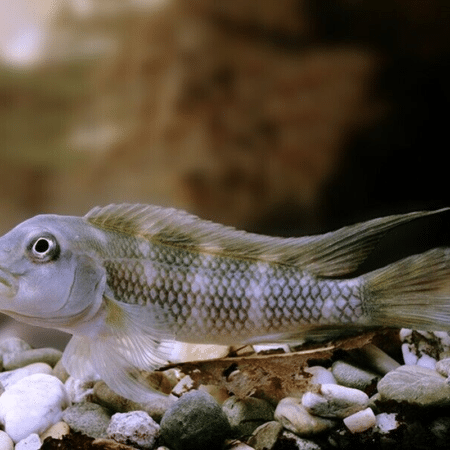
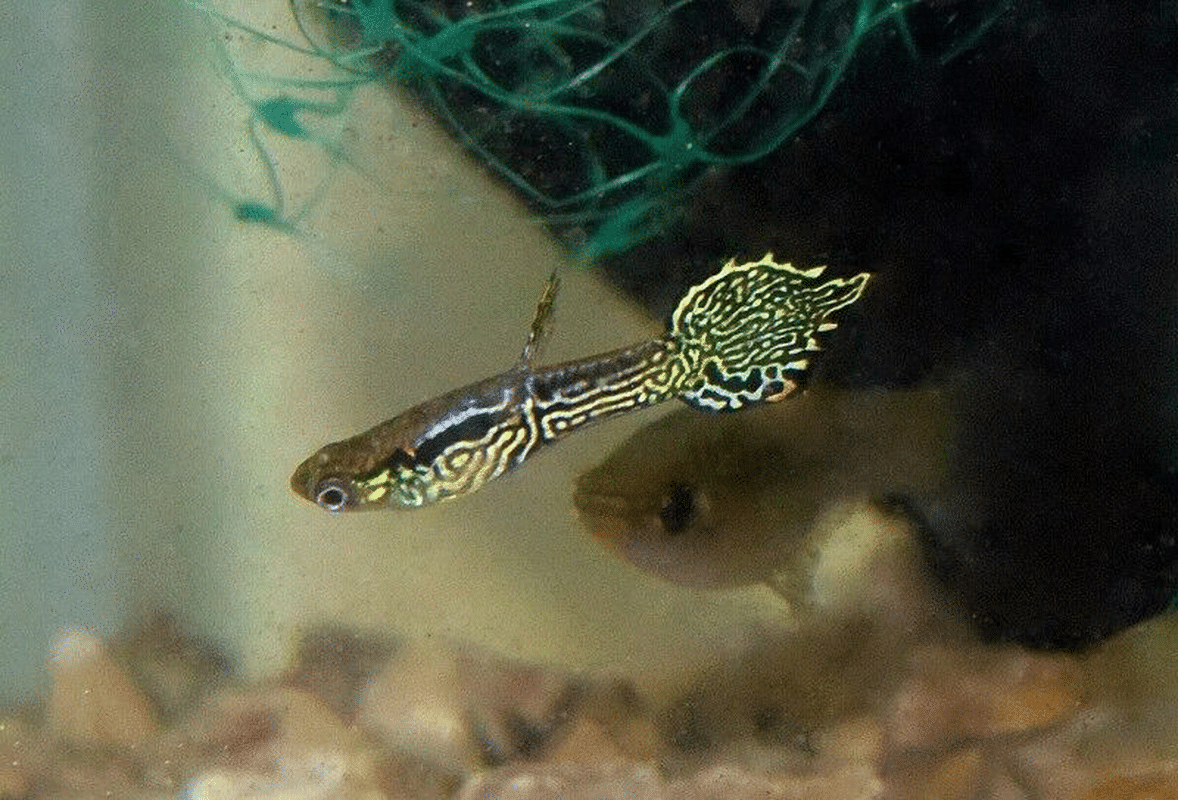

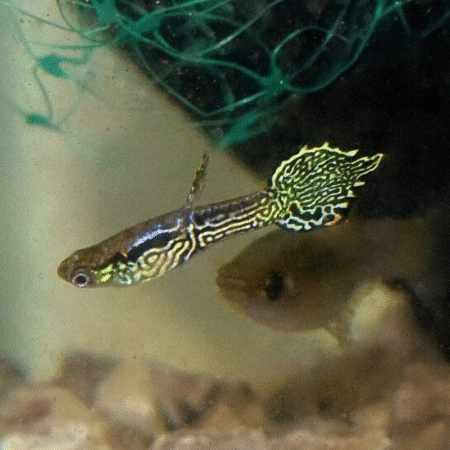
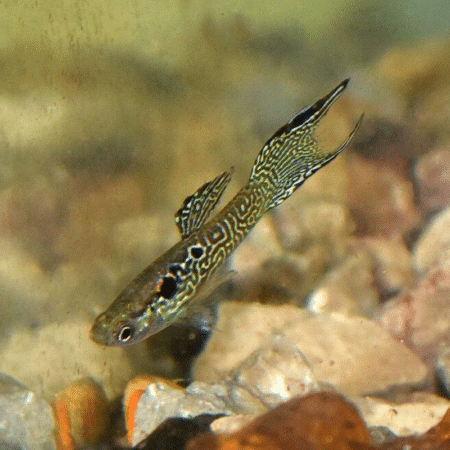
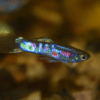
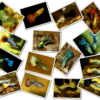









Emily Carter (verified owner) –
I recently added a pair of Yellow Snakeskin Miniature Guppies to my freshwater tank, and I couldn’t be more thrilled! These little beauties have transformed my aquarium with their vibrant colors and playful personalities. After just two weeks, they’ve adjusted beautifully and have started to show some lovely courtship behaviors. Watching them dart around is a constant joy!
What I appreciate most about these Endler guppies is their health and vitality. They arrived in excellent condition, and you can tell they were well cared for before coming to my home. Compared to other guppies I’ve kept, these miniature ones seem more active and less prone to stress, which is a huge plus for me as a caring fish parent.
One small consideration is that they do prefer slightly warmer water, so I recommend keeping your tank at around 78-80°F for optimal happiness. Overall, I highly recommend these guppies to anyone looking to add a splash of color and movement to their setup. Whether you’re a beginner or a seasoned hobbyist, you’ll adore these little livebearers. I can’t wait to see how they flourish and possibly breed in the future!